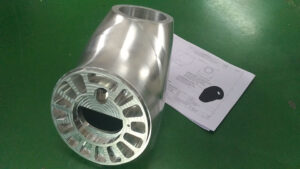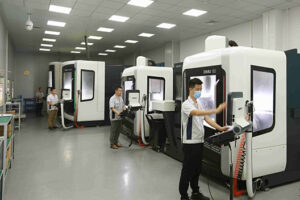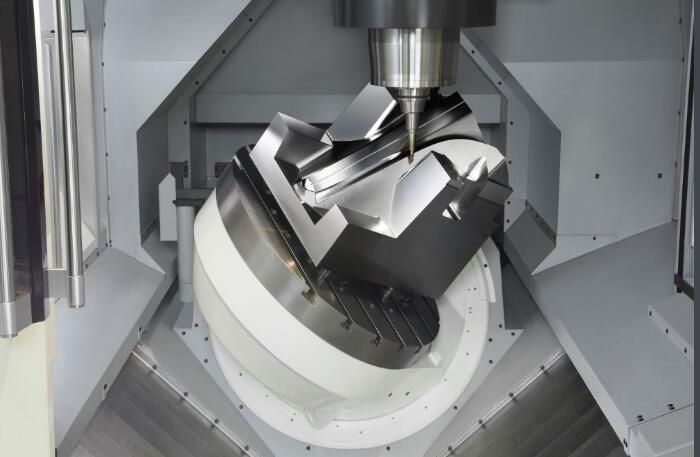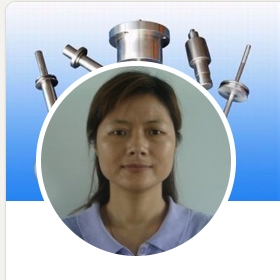Scoprite i principali vantaggi della lavorazione CNC a 5 assi. Scoprite come funziona, dove viene utilizzata e perché è il futuro della produzione di precisione.
Introduzione alla lavorazione CNC a 5 assi
Nel mondo di oggi, in rapida evoluzione, velocità e precisione sono più importanti che mai. Ciò è particolarmente vero nel settore manifatturiero. È qui che Lavorazione CNC a 5 assi è in arrivo. Si tratta di una tecnologia potente che aiuta a realizzare parti dettagliate e complesse per molti settori come quello aerospaziale, medico e automobilistico.

A differenza delle macchine tradizionali a 3 assi, che muovono l'utensile in sole tre direzioni (X, Y e Z), le macchine a 5 assi aggiungono altre due direzioni. Queste direzioni supplementari aiutano la macchina a raggiungere più lati di un pezzo in una sola volta. Ciò significa meno impostazioni, produzione più rapida e maggiore precisione.
Questo metodo consente di risparmiare tempo e di ridurre gli errori. Ingegneri e progettisti amano utilizzarlo perché possono creare pezzi complessi che prima non erano possibili. Con l'aiuto dei programmi informatici, l'intero processo diventa ancora più fluido.
In questo articolo vi spiegheremo come funziona la lavorazione CNC a 5 assi, quali vantaggi offre, dove viene utilizzata e come potete scegliere il partner di servizio giusto. Che siate alle prime armi o vogliate migliorare le vostre conoscenze, questa guida è fatta apposta per voi.
Lavorazione CNC a 5 assi
Lavorazione CNC a 5 assi è una tecnica moderna che utilizza il controllo del computer per tagliare e modellare i materiali. Consente a un utensile da taglio di muoversi in cinque direzioni contemporaneamente. Ciò consente ai produttori di realizzare pezzi molto dettagliati con curve morbide, fori profondi e forme complesse.
Scomponiamo i cinque assi:
- Asse X: Da sinistra a destra
- Asse Y: Da davanti a dietro
- Asse Z: Su e giù
- Asse A: Rotazione intorno all'asse X
- Asse B: Rotazione intorno all'asse Y
Combinando tutti e cinque i movimenti, la macchina può raggiungere quasi ogni superficie del pezzo senza fermarsi. Questo rende il processo molto più veloce e preciso.
Ecco una semplice tabella per mostrare il movimento:
| Asse | Direzione | Scopo |
| X | Da sinistra a destra | Posizionamento di base |
| Y | Da davanti a dietro | Posizionamento di base |
| Z | Su e giù | Controllo della profondità |
| A | Ruota intorno a X (parte inclinabile) | Controllo dell'angolo |
| B | Ruota intorno a Y (inclinazione del mandrino) | Regolazione della direzione dell'utensile |
Questa tecnologia aiuta a creare oggetti come parti di motori, impianti medici o strumenti personalizzati che richiedono forme esatte e dettagli precisi.
Esistono principalmente due tipi di macchine CNC a 5 assi, ed entrambi hanno un utilizzo speciale.
Macchine a cerniera
In queste macchine, la tavola che contiene il pezzo può inclinarsi e ruotare. Ciò significa che l'utensile rimane in un punto, mentre il pezzo si muove. Le macchine a cerniera sono ideali per i pezzi piccoli o che necessitano di tagli profondi. Sono perfette anche per le superfici curve.
Macchine a testa girevole
Queste macchine muovono l'utensile da taglio invece della tavola. Il pezzo rimane fermo mentre l'utensile si muove intorno ad esso. Questo tipo di macchina è ideale per pezzi grandi o pesanti, perché il pezzo non deve essere girato o riposizionato.
| Caratteristica | Macchina a cerniera | Macchina a testa girevole |
| Movimento | Muoversi in parte | Spostamento dello strumento |
| Best for | Small, complex parts | Large, heavy parts |
| Tempo di configurazione | More | Less |
| Flessibilità | Less for large items | More for heavy components |
Choosing the right type depends on what kind of parts you need to make and how often.
Benefits of Using 5 Axis CNC Machining
Here’s why many people choose 5 Axis CNC Machining:
- Fewer Setups Needed: You can finish a part in one go without stopping and repositioning it.
- Better Accuracy: Less handling means fewer chances of mistakes.
- Faster Production: More parts in less time, which saves money.
- Complex Shapes: You can make detailed parts with holes, curves, and slopes.
- Better Surface Quality: Smooth finishes reduce polishing time.
- Saves Tool Life: The tool always cuts at the right angle, so it lasts longer.
- Lower Cost Over Time: Though the machines are expensive, they save money in the long run.
- Smaller Workspaces: One machine can do the job of many.
- Increased Safety: Fewer setups reduce worker risk.
- Supports Innovation: Helps designers build parts they couldn’t make before.
These benefits explain why more companies are switching to this advanced technology.
Industries That Use 5 Axis CNC Machining
This technology is used across many sectors:
- Aerospaziale: Making engine parts, turbines, and structural supports.
- Medico: Creating implants, surgical tools, and dental components.
- Automobile: Producing engine parts, gears, and custom car parts.
- Energy: Building wind turbine parts and power plant tools.
- Defense: Making weapons and high-strength equipment.
- Elettronica: Cutting detailed parts for devices and computers.
In every case, the main goal is to create complex, strong, and accurate parts that meet strict standards.
Common Materials Used in 5 Axis CNC Machining
Different jobs need different materials. Here are some of the most common:

| Tipo di materiale | Examples | Use Case |
| Metals | Aluminum, Steel, Titanium | Aerospace, Medical, Automotive |
| Plastica | ABS, Nylon, Polycarbonate | Electronics, Prototyping |
| Composites | Carbon Fiber, Fiberglass | High-strength, light components |
Key Features to Consider:
- Hardness: Affects how the material can be cut.
- Heat Resistance: Important for engine parts.
- Weight: Lightweight parts are needed in aerospace and robotics.
- Costo: Some metals like titanium are expensive but offer great strength.
Challenges and Limitations
Though powerful, 5 Axis CNC Machining has some downsides:
- High Initial Cost: Machines and software are expensive.
- Complex Programming: Takes skill and time to program the toolpaths.
- Long Learning Curve: New users need training.
- Maintenance Needs: Advanced machines need more care.
- Not for Simple Parts: Overkill for basic jobs.
Still, these issues can be solved with planning and training. The benefits far outweigh the challenges for most companies.
Design Tips for Better 5 Axis CNC Machining
Good design makes machining easier. Here are some useful tips:
- Use Draft Angles: This helps with tool access and finish.
- Avoid Thin Walls: These can bend or break during cutting.
- Combine Parts: Where possible, design one complex part instead of assembling many.
- Minimize Undercuts: Harder to machine and may need special tools.
- Stay Within Machine Limits: Know the size and axis limits of your machine.
Working closely with the machine shop or engineer early in the design helps avoid costly mistakes.
Future of 5 Axis CNC Machining
Technology keeps moving forward. Here’s what’s coming:
- AI and Automation: Machines will soon set up and adjust themselves.
- Digital Twins: Virtual models help plan and test cuts before real machining.
- More Affordable Machines: Prices will drop as demand grows.
- Smart Sensors: These track wear and alert users when tools need changes.
- Sustainable Practices: Machines are using less power and making less waste.
These trends will make 5 Axis CNC Machining even more useful and common in future factories.
How to Choose the Right CNC Machining Partner?

A good partner makes a big difference. Look for:
- Esperienza: Do they know how to handle complex jobs?
- Technology: Do they use up-to-date machines and software?
- Quality Checks: Do they test parts before sending them?
- Velocità: Can they deliver on time?
- Communication: Do they listen and share progress updates?
10 Tips for 5 Axis CNC Machining
- Always start with a clean CAD file.
- Choose the right material for your part.
- Avoid sharp corners in design.
- Know your machine’s axis limits.
- Use proper tool lengths to avoid vibration.
- Double-check your toolpath simulation.
- Avoid over-engineering simple parts.
- Combine parts where possible.
- Plan for future production—don’t just think prototype.
- Work closely with experienced machinists.
Domande frequenti
What is 5 Axis CNC Machining used for?
It’s used to create detailed and complex parts in industries like aerospace, medical, and automotive.
Is 5 Axis CNC better than 3 Axis?
Yes, it allows for more accuracy, faster production, and the ability to make complex shapes.
Quali materiali possono essere lavorati?
Aluminum, titanium, steel, plastics, and composite materials are commonly used.
How much does a 5 Axis CNC machine cost?
Prices can range from $100,000 to over $500,000 depending on features and size.
Can it be used for low-volume jobs?
Yes. It’s great for both prototypes and mass production.
Do I need special software?
Yes. CAM software is needed to program the machine’s toolpaths.
How long does it take to learn?
Learning takes weeks or months, depending on your background.
What industries benefit most?
Aerospace, medical, automotive, and defense benefit the most.
Is it safe?
Yes, when operated correctly and with safety procedures in place.
Can it replace manual machining?
In many cases, yes. But manual machining is still useful for simple parts and repairs.
Conclusione
Lavorazione CNC a 5 assi has changed the game in manufacturing. It brings speed, precision, and design freedom to industries around the world. While it may cost more up front, the long-term gains in quality and productivity are huge.
Whether you’re building jet engines or custom tools, this technology gives you the power to make complex parts quickly and accurately. With ongoing advances in automation and AI, the future looks even brighter.
If you’re thinking of using 5 Axis CNC Machining, now is the time to explore your options. The right knowledge and partner can help you bring your designs to life faster, better, and smarter.
Need custom CNC parts?
Trust SYM Lavorazione di precisione for reliable 5 Axis CNC solutions – from prototype to full-scale production.



